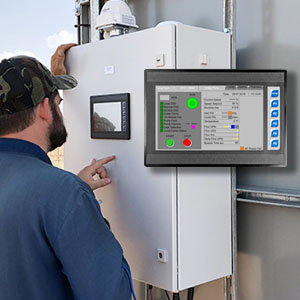Pump Station Monitoring and Telemetry
Comprehensive Pump Station Monitoring and Telemetry Solutions in South Africa Effective pump station monitoring and telemetry are essential for ensuring reliable water management, wastewater treatment, and industrial pumping operations. In South Africa, advanced pump monitoring and telemetry systems offer 24/7 real-time data, enabling operators to maintain control over pump stations from any location. These solutions improve operational efficiency, reduce downtime, and allow for proactive maintenance, saving on repair costs and extending equipment life. What Is Pump Station Telemetry? Pump station telemetry involves using technology to gather, transmit, and analyze data from pumping stations, allowing for real-time insights into the system's health and performance. Key metrics like flow rate, pressure, temperature, and energy consumption are tracked, helping prevent breakdowns and optimize pump settings. Benefits of Pump Station Monitoring in South Africa South African industries, municipalities, and utilities benefit from telemetry solutions by gaining control over water distribution, wastewater management, and storm water systems. Real-time monitoring detects leaks, reduces energy use, and supports compliance with South African environmental regulations. Additional advantages include:
Essential Components of Pump Monitoring and Telemetry Systems Pump telemetry systems typically include sensors for flow rate, pressure, and temperature; data acquisition systems to gather this information; and wireless transmission capabilities for remote access. These systems integrate seamlessly with existing infrastructure, offering operators remote control and access to performance data via smartphones or web dashboards. Explore Our Pump Station Solutions Whether you’re managing a municipal water station, an industrial plant, or an agricultural irrigation system, our pump station telemetry services ensure efficiency and operational reliability. South African organizations can contact us for tailored pump station monitoring, telemetry installation, and maintenance solutions. Discover how advanced monitoring can keep your systems running smoothly with minimal downtime and reduced energy costs. |

